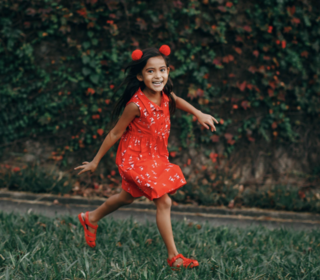Misophonia
Misophonia and Movement
Movement helps bring down misophonia reactivity.
Posted September 15, 2020 Reviewed by Kaja Perina
As many of us know, the greatest challenge regarding misophonia is learning to lower nervous system reactivity (or calm the body) "in the moment." However, activities that calm the body in everyday life are equally as important because the two processes interact. Accordingly, this post is about proactive calming exercises and activities that play a role in how one responds "in the moment."
Many people with misophonia experience anticipatory anxiety. That is, they become anxious when they know they may be faced with triggers. One way to help circumvent this anxiety is to plan activities that are calming prior to entering a trigger zone. For example, if you are planning a family outing in which you think you or your child may face triggers, use physiological calming exercises before you go! While this may seem simple, anticipatory anxiety elevates the nervous system making proactive activities even more important. In other words, once anticipatory anxiety is in place, when faced with triggers the individual with misophonia is going from “50 to 90” rather than “0 to 60.” The lower we start, the lower we stay."
Most of us know that activities such as taking a warm bath, or listening to calming music can be soothing, because they block out the overwhelming effects of being bombarded with too much auditory or visual stimuli. Other activities (like walking outside, rocking or gliding in a chair, and breathing techniques) also utilize our senses to change the neurophysiologic state. Yet, most people don't realize that movement can not only lower general arousal (or is generally calming) but can also positively impact misophonia in the moment!
In order to see how powerful movement is, simply note the difference of how much misophonia reactivity you or your child experiences when he or she is moving (running, skateboarding, dancing, etc.). As an important aside, the outdoors is a wonderful place for anyone with misophonia. Think simply of acoustics. If one is inside at a kitchen table, sound is not being absorbed and is literally bouncing off the walls right back at you. Outside, however, sound can travel away. See how differently you or your child feels while running around outside and/or doing other activities outdoors!

When moving, the way we integrate our senses is different and our unconscious attention is in high demand. The more complex movement is, the more attentional demand required.
The more attentional demand required, the less we focus on sounds. Note, this is all very much going on outside our conscious awareness. Knowing that there are times that misophonia reactivity is reduced or even absent is something that can make a child or an adult feel better.
Learning how to manage and prepare to engage in these activities daily and proactively can positively impact an individual's functioning and overall well-being.
For more information about misophonia and free resources Misophonia International.


